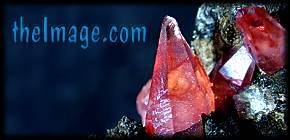
|
|
|||
|
Name: |
siderite |
|
|||
|
Class: |
Carbonates |
||||
|
Chemistry: |
FeCO3 Iron Carbonate |
||||
|
Color(s): |
yellowish to brownish, black, occasuibakky white |
||||
|
Hardness: |
4 - 4.5 |
SpecGrav: |
3.7 - 3.9 |
||
|
Fracture: |
conchoidal |
Cleavage: |
complete |
||
|
Crystal: |
Hexagonal (commonly rhombohedral, prismatic and scalenohedral. Sometimes massive.) |
||||
|
Envronment: |
hypothermal veins, and hydrothermal replacements. |
||||
|
Association: |
barite, calcite, galena, sphalerite, chalcopyrite |
||||
|
Locals: |
| Austria | Germany | Czechoslovakia | England | Spain | Conn., Colorado, Az., USA | |
||||
|
Misc: |
The name is derived from the Greek word "sideros", meaning "iron". It is a minor ore of iron. It is soluble in warm hydrochloric acid. It often has a soft yellow fluorescence under UV light. |
||||
|
Photos |
|||||
|
1.) Hulcani, Peru |
4.) Hulcani, Peru |
||||
|
|
|
|
|
|
|
|
|
|